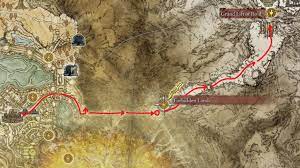Are you ready to embark on an epic adventure along the Rold Route? This guide is designed to help you navigate the trail with ease, providing valuable tips and tricks along the way.
Discover the best time to hike, essential gear to pack, and how to prepare for the physical challenges that await.
With navigation tools, safety precautions, and eco-friendly tips, you’ll be well-prepared to conquer the Rold Route and make unforgettable memories.
Let’s get started!
Best Time to Hike Rold Route
The best time to hike the Rold Route is during the summer months. With longer days, warmer temperatures, and less chance of rain, the summer offers the ideal conditions for an enjoyable hiking experience.
During this time, the lush greenery of the Rold Forest is at its peak, creating a picturesque backdrop for your adventure. The trails are well-maintained and easier to navigate, ensuring a smoother journey.
You can also take advantage of the pleasant weather to fully immerse yourself in the natural beauty of the route. Remember to bring plenty of water and sunscreen, as the sun can be intense during the summer months.
Essential Gear for the Trail
When embarking on the Rold Route, it’s important to equip yourself with the essential gear for the trail.
First and foremost, invest in a sturdy pair of hiking boots that provide ankle support and have good traction. Your feet will thank you after miles of uneven terrain.
Additionally, dress in layers to adapt to changing weather conditions. A moisture-wicking base layer, insulating mid-layer, and waterproof outer layer are essential. Don’t forget a hat, gloves, and sunglasses to protect yourself from the sun’s harmful rays.
As for equipment, a reliable backpack with a hydration system is crucial, as well as a map, compass, and GPS device for navigation.
Lastly, pack enough water, snacks, and a first aid kit to keep you fueled and prepared for any unforeseen circumstances.
Preparing for the Physical Challenges
Are you ready to tackle the physical challenges of the Rold Route?
Before embarking on this adventure, it’s crucial to assess your fitness level and undergo proper training to ensure you can handle the demands of the trail.
Additionally, don’t forget to equip yourself with essential gear and equipment that will aid in your journey.
Lastly, implementing injury prevention strategies, such as proper stretching and pacing, will help keep you safe and enable you to conquer this challenging route with confidence.
Fitness Requirements and Training
To successfully navigate Rold Route, you’ll need to be physically fit and prepared for the challenges ahead. This demanding adventure requires endurance, strength, and agility.
It’s crucial to engage in regular physical training to ensure your body is ready for the rigors of the journey. Incorporating cardiovascular exercises, such as running or cycling, will build your stamina and improve your cardiovascular health.
Strength training, such as weightlifting or bodyweight exercises, will enhance your muscular strength and endurance. Don’t forget to focus on core exercises to strengthen your abdominal and back muscles, as they play a crucial role in maintaining balance and stability.
Additionally, practicing hiking or trekking on uneven terrain will help simulate the conditions you’ll encounter on Rold Route.
Essential Gear and Equipment
Now that you’re physically prepared, let’s talk about the essential gear and equipment you’ll need to conquer the physical challenges of Rold Route.
First and foremost, invest in a sturdy pair of hiking boots that provide ankle support and have a good grip. This will protect your feet and provide stability on the uneven terrain.
Additionally, make sure to pack lightweight, moisture-wicking clothing that will keep you comfortable and dry during your journey.
Don’t forget to bring a waterproof and durable backpack to carry your essentials such as water bottles, snacks, a map, a compass, a flashlight, and a first aid kit.
It’s also essential to have a reliable and fully charged cell phone or a satellite phone in case of emergencies.
Lastly, protect yourself from the elements by wearing a hat, sunglasses, sunscreen, and insect repellent.
With the right gear and equipment, you’ll be well-prepared to tackle the challenges of Rold Route.
Injury Prevention Strategies
When embarking on the Rold Route, be proactive in preventing injuries by implementing effective strategies for preparing yourself for the physical challenges ahead.
Start by ensuring that you’re physically fit and in good health before attempting the journey. Regular exercise, such as strength training and cardio workouts, can help improve your endurance and reduce the risk of muscle strains and sprains.
Additionally, make sure to stretch and warm up properly before each day’s hike to prevent muscle tightness and minimize the chance of injury. It’s also essential to wear appropriate footwear that provides good support and traction on uneven terrain.
Remember to take breaks and listen to your body to avoid overexertion and exhaustion.
Navigation Tools and Resources
Now it’s time to talk about the different navigation tools and resources you can rely on during your adventure on the Rold Route.
First, you’ll need to consider whether to use a GPS or a compass to navigate your way.
Then, you’ll have to decide between online maps and paper maps, weighing the pros and cons of each.
GPS Vs Compass
If you’re an adventurer planning to navigate the Rold Route, deciding between using a GPS or a compass as your navigation tool is a crucial choice. Both tools have their advantages and drawbacks, so it’s important to consider your specific needs and preferences.
A GPS, or Global Positioning System, offers precise and real-time navigation information. With a GPS device, you can easily track your location, plan routes, and receive alerts about upcoming obstacles or points of interest. However, GPS devices require batteries and can be affected by signal loss in remote areas.
On the other hand, a compass is a reliable and low-tech option that doesn’t rely on batteries or signals. It provides a basic sense of direction, allowing you to navigate accurately using a map. However, using a compass requires some skill and knowledge in reading maps and understanding magnetic declination.
Ultimately, the choice between a GPS and a compass depends on your personal preference, skill level, and the specific demands of the Rold Route.
Online Maps Vs Paper Maps
Consider using both online maps and paper maps as navigation tools and resources when adventuring along the Rold Route.
Online maps provide real-time information and can be accessed easily on your smartphone or GPS device. They offer features like turn-by-turn directions, traffic updates, and even alternative routes. This can be particularly helpful when navigating through unfamiliar territory or when you need to make quick adjustments to your route.
On the other hand, paper maps have their own advantages. They don’t rely on a stable internet connection and can be used in areas with poor or no signal. Paper maps also offer a larger, bird’s-eye view of the area, allowing you to see the bigger picture and plan your journey accordingly.
Navigation Apps Comparison
To maximize your navigation experience along the Rold Route, utilize the benefits of different navigation apps and compare their features.
When it comes to choosing a navigation app, there are several factors to consider. One of the most important features to look for is accurate mapping. Make sure the app provides detailed and up-to-date maps of the Rold Route, including all the trails, landmarks, and points of interest.
Another key aspect to consider is offline functionality. Opt for an app that allows you to download maps and use them offline, as you may encounter areas with poor or no internet connection along the route.
Additionally, look for apps that offer real-time navigation, turn-by-turn directions, and the ability to track your progress.
Safety Precautions to Keep in Mind
When navigating the Rold Route, prioritize your safety by taking necessary precautions.
First and foremost, make sure to pack essential safety gear such as a map, compass, and a first aid kit. These items will help you stay on track and handle any emergencies that may arise.
Additionally, it’s crucial to inform someone about your trip and estimated return time, so they can alert authorities if needed.
While on the trail, be aware of your surroundings and watch out for any potential hazards such as loose rocks or slippery terrain.
Stay hydrated and nourished throughout your journey to maintain your energy levels.
Lastly, listen to your instincts and don’t hesitate to turn back or seek shelter in case of inclement weather or unsafe conditions.
Camping and Accommodation Options
To ensure a comfortable and convenient journey along the Rold Route, explore the various camping and accommodation options available to adventurers.
When it comes to camping, there are several designated campsites along the route that offer basic facilities such as toilets, showers, and cooking areas. These campsites are a great option for those who prefer a more rustic experience.
However, if you prefer a bit more comfort, there are also hotels and guesthouses available in the nearby towns and villages. These accommodations offer a range of amenities including comfortable beds, hot showers, and sometimes even Wi-Fi.
It’s important to book in advance, especially during peak season, to secure a spot at your preferred campsite or accommodation.
Water Sources and Purification Methods
Ensure you have access to clean and safe water throughout your journey along the Rold Route by knowing where to find water sources and how to purify it.
Along the route, you’ll find various natural water sources such as rivers, lakes, and streams. These sources can provide you with fresh water, but it’s essential to purify it before consumption to avoid waterborne illnesses.
There are several methods to purify water, including boiling, using water filters, or using water purification tablets. Boiling water is a reliable and effective method as it kills most microorganisms. Water filters can remove bacteria and protozoa, while water purification tablets contain chemicals that kill harmful organisms.
Always prioritize your health and safety by ensuring you have access to clean and purified water on your adventure along the Rold Route.
Wildlife Encounters and How to Handle Them
As an adventurer on the Rold Route, you may encounter various wildlife species, so it’s crucial to be prepared and know how to handle these encounters safely.
When encountering wildlife, it’s important to remember that these animals are wild and should be treated with caution and respect. Keep your distance and avoid approaching or feeding them.
If you come across a bear or a mountain lion, make yourself look larger by raising your arms and speaking firmly. Back away slowly and avoid turning your back on them.
In the case of smaller animals like snakes or spiders, give them space and don’t try to handle them.
It’s also advisable to carry a first aid kit with you, including supplies for treating animal bites or stings.
Tips for an Eco-Friendly Adventure
One important tip for an eco-friendly adventure on the Rold Route is to minimize your use of single-use plastics. These plastics, such as water bottles, straws, and food containers, contribute to pollution and harm the environment.
Instead, bring a reusable water bottle and refill it at water stations along the route. You can also pack your own snacks in reusable containers and bring your own utensils.
Another way to reduce plastic waste is to opt for eco-friendly toiletries, such as shampoo bars and bamboo toothbrushes.
Additionally, be mindful of your waste disposal by properly separating and recycling your trash.
Frequently Asked Questions
Are There Any Age Restrictions for Hiking the Rold Route?
Are there any age restrictions for hiking the Rold Route? No, there are no age restrictions. Anyone can hike the route as long as they are physically fit and prepared for the challenges it presents.
How Long Does It Typically Take to Complete the Entire Rold Route?
It typically takes about two weeks to complete the entire Rold Route. However, the duration can vary depending on your pace and the specific stops or detours you decide to make along the way.
Are Dogs Allowed on the Rold Route?
Yes, dogs are allowed on the Rold Route. They can accompany you on your adventure, making it even more enjoyable. Just remember to keep them on a leash and clean up after them.
Are There Any Specific Permits Required to Hike the Rold Route?
Yes, there are specific permits required to hike the Rold Route. Make sure you research and obtain the necessary permits beforehand to ensure a smooth and enjoyable adventure.
Are There Any Guided Tours or Groups Available for Hiking the Rold Route?
Yes, there are guided tours and groups available for hiking the Rold Route. They can provide valuable assistance, guidance, and company throughout your journey, making the experience more enjoyable and safer.
Conclusion
In conclusion, navigating the Rold Route can be an exhilarating adventure for outdoor enthusiasts. By choosing the best time to hike, preparing with essential gear, and using navigation tools, adventurers can make the most of their journey.
Safety precautions, camping options, and knowledge of water sources and wildlife encounters are also important. Remember to stay eco-friendly throughout your adventure.
With these tips and tricks in mind, you’ll be well-equipped to tackle the Rold Route and create unforgettable memories.



